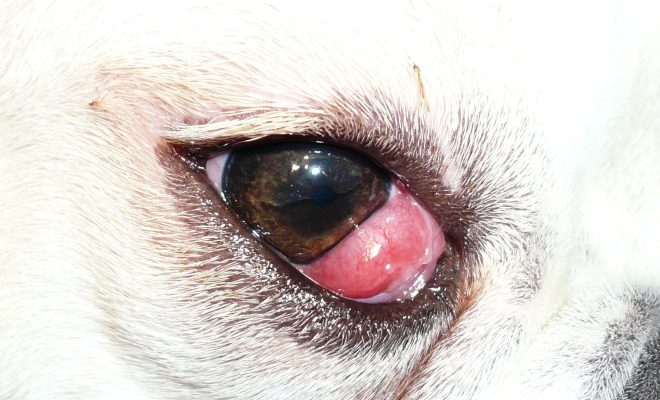8 Simple Ways to Treat Cherry Eye in Dogs

Cherry eye, or prolapse of the third eyelid gland, is a common eye condition affecting dogs. The third eyelid is a protective membrane in the corner of the eye that helps maintain tear production and shields the eye from debris. When the gland prolapses or slips out of place, it appears as a red, swollen mass – resembling a cherry – in the corner of the affected eye. While not life-threatening, cherry eye can be uncomfortable for your dog and may lead to other complications. Here are eight simple ways to treat cherry eye in dogs.
1. Gentle Massage
In some cases, gentle massage around the affected area can help return the gland to its correct position. Use clean hands and gentle pressure in a circular motion to encourage the gland’s retraction. Be cautious not to apply too much pressure or cause discomfort for your dog.
2. Cold Compresses
Applying cold compresses on the affected area can help alleviate swelling and inflammation associated with cherry eye. Use a clean cloth soaked in cold water and gently press it onto the affected area for a few minutes several times a day.
3. Over-the-counter Eye Drops
Certain over-the-counter lubricating eye drops specifically designed for dogs can help alleviate pain and irritation caused by cherry eye. Always consult your veterinarian before using any over-the-counter treatments to ensure they are safe for your pet.
4. Prescription Medications
In some cases, your veterinarian may prescribe medications such as anti-inflammatory drugs or topical treatments to manage your dog’s symptoms while addressing the underlying condition.
5. Surgical Replacement
If conservative measures fail to resolve the issue, surgical replacement of the gland is often necessary. During this procedure, your veterinarian will carefully reposition the gland back into its proper location and suture it into place, ensuring that it stays put without interrupting normal tear production.
6. Avoiding Surgical Removal
It is crucial to avoid surgical removal of the gland whenever possible, as this can lead to chronic dry eye (keratoconjunctivitis sicca). Dry eyes can be uncomfortable for your dog and may require lifelong management with medication and artificial tears.
7. Post-Surgery Care
Following a successful cherry eye surgery, closely follow your veterinarian’s post-operative care instructions. This may include administering medications, using e-collars to prevent your dog from rubbing their eye, and returning for follow-up appointments to monitor healing and ensure success.
8. Be Proactive
Early detection is vital when dealing with cherry eye. If you notice any swelling or redness near your dog’s eye, it is essential to consult with your veterinarian immediately. Prompt treatment can often improve the prognosis for this condition.
Cherry eye can be an uncomfortable and distressing experience for dogs, but with the proper care and attention, it can be effectively managed. By following these eight simple steps, you can ensure that your furry friend receives the care they need to maintain their eye health and overall wellbeing.






